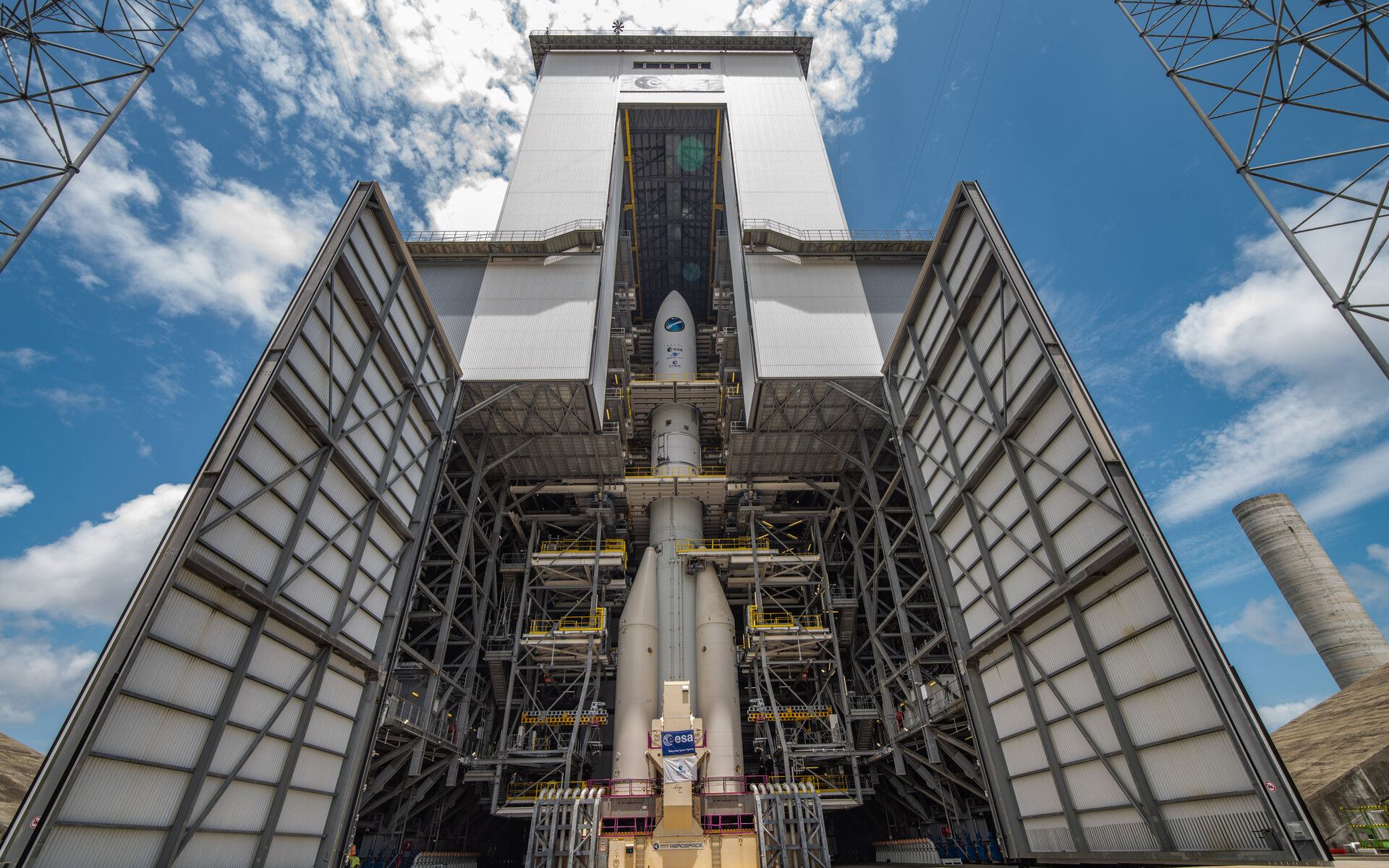A prototype of ESA’s new heavy lift rocket is now fully assembled and sitting on the launchpad at Europe’s Spaceport in French Guiana. But according to officials at a briefing last week, the space agency and the rocket’s prime contractor, ArianeGroup, have decided to delay the first flight of the Ariane 6 to the fourth quarter of 2023 after several issues were brought to the fore in an external review.
During the briefing, ESA Director General Josef Aschbacher cautioned he could not guarantee that even a launch in late 2023 would be possible, as several milestone have yet to be completed.
“With a project of this magnitude, it needs to be clear that this is a planned date and that the program will still need to successfully and timely achieve a number of key milestones in order for this schedule to be valid,” Aschbacher said. The milestones, which need to be completed by early next year, include completing the upper stage’s hot firing test, beginning the hot firing tests of Ariane 6’s core stage, and a qualification review of the launch system.
The officials at the briefing did not give details of the reasons behind the latest delay other than describing them as “technical challenges.”
Years of Development
Ariane 6 was initially conceived in the early 2010s to be a replacement the workhorse Ariane 5, which is no longer in production. Ariane 5’s first successful launch was in 1998, and since then has sent 109 spacecraft on their way, including the first ATV Jules Verne to the International Space Station and the James Webb Space Telescope to the second LaGrange point 1.5 million km (1 million miles) from Earth.

Ariane 6 is a expendable launch vehicle with a modular design that can be customized to use either two or four P120C strap-on boosters, depending on mission requirements. With the various designs, it can put a 4,500 kg payload into a geostationary transfer orbit or 10,300kg into low Earth orbit using the two boosters, and with four side boosters, it can launch 11,500 kg into a geostationary transfer orbit and 20,600kg into low Earth orbit.
Ariane 6 was developed at a cost of just under 4 billion euros ($3.9 billion) and was originally planned for its first launch in July 2020. However, the project has been hampered by several delays; the most recent delay was due in part work-related issues during the Covid-19 pandemic.
On the launchpad for tests
On October 12, the fully assembled 60-meter (197-foot)-tall prototype of the Ariane 6 was rolled out to the launchpad. Teams hope to begin tests to will validate the entire system including the rocket, the launch pad, and shared electrical, fluid and mechanical systems. The combined tests include tank filling and drainage operations which guarantee smooth-running of a launch sequence. Flight and control bench software will also be tested. Later, static hot-fire tests of the Vulcain 2.1 core stage engine will include aborted firings and long firings.
ESA Director of Space Transportation Daniel Neuenschwander underscored the importance of Ariane 6 as a successor to Ariane 5, which has provided Europe with reliable access to space.
“Innovation is the key to maintaining Europe’s capacity to reach space with a fully independent launch system that is competitive and versatile,” he said. “With Ariane 6 we have Europe’s best engineers developing new technologies and manufacturing methods to build on the success of one of the world’s most reliable launch systems.”
Ariane 6 is already under contract to conduct at least 18 launches to low Earth orbit for Amazon’s satellite broadband program called Project Kuiper, multiple launches for ESA’s Galileo global navigation satellite system, the Meteosat weather satellites (2024), the Earth Return Orbiter for the Mars sample-return mission (2026, tentative), and the upcoming PLATO space telescope (2026).
More Ariane 6 rockets are under construction at facilities in France and Germany, and the components for these rockets have already been ordered for upcoming flights.
“What is at stake here is European independent access to space,” Aschbacher said. “We are all fully committed to proceeding as speedily as possible to the launch pad.”

